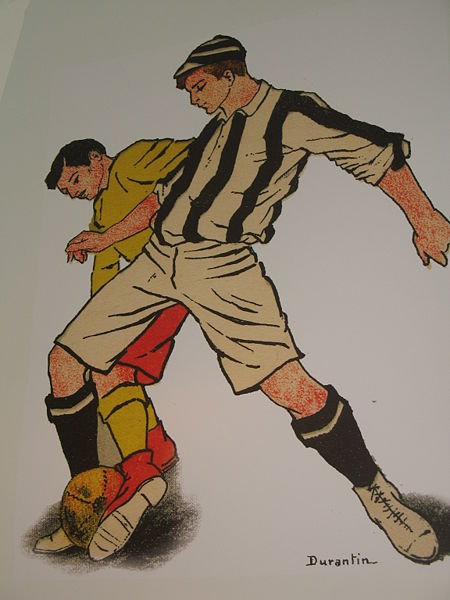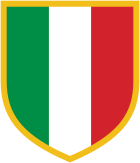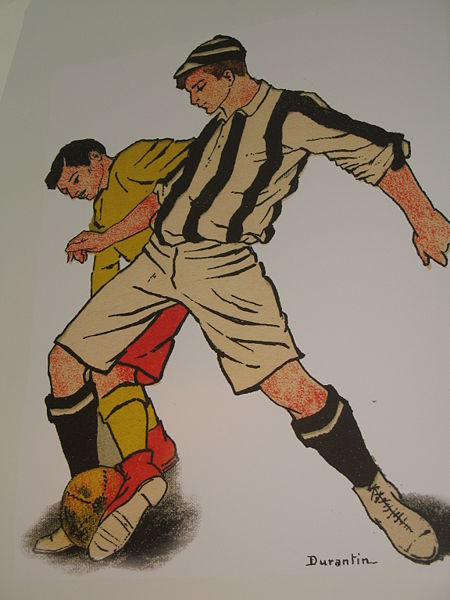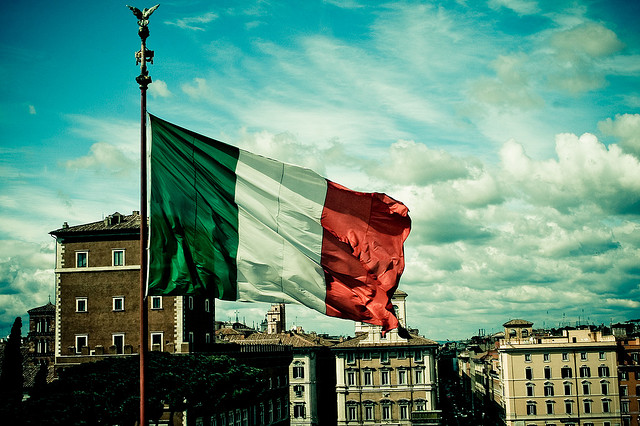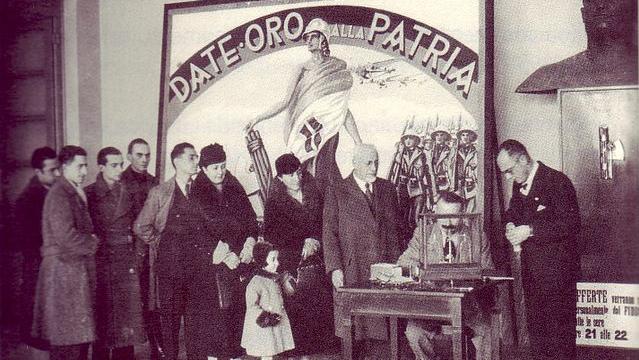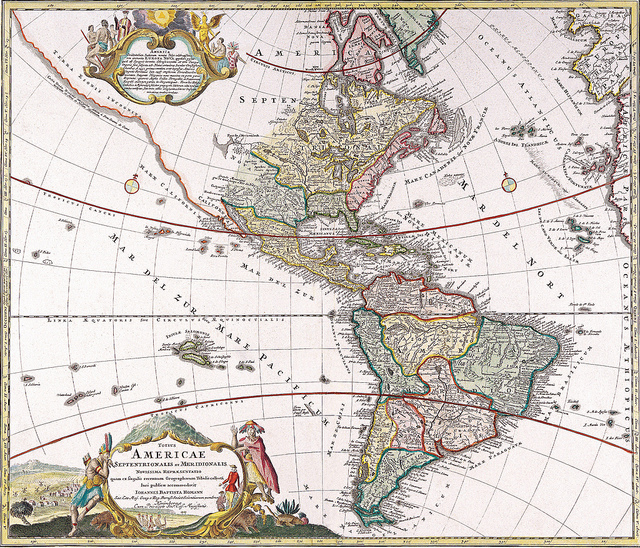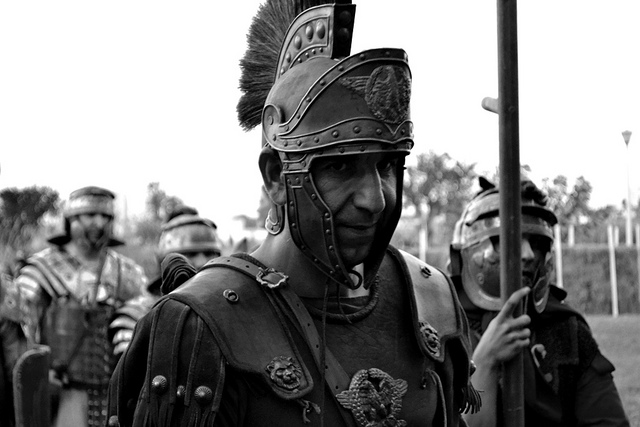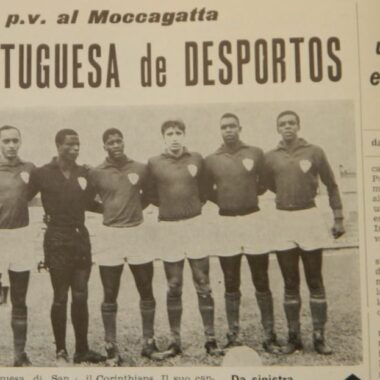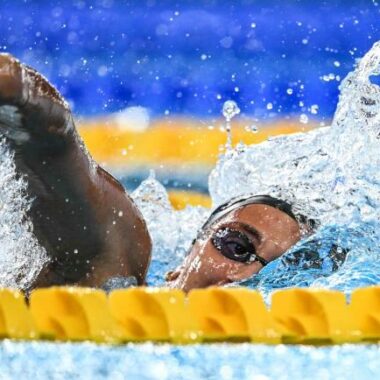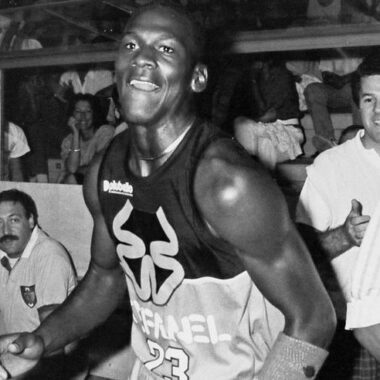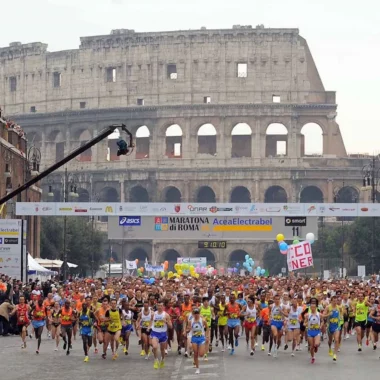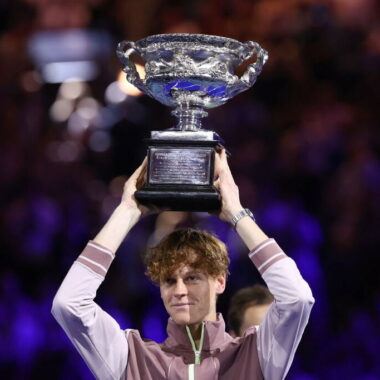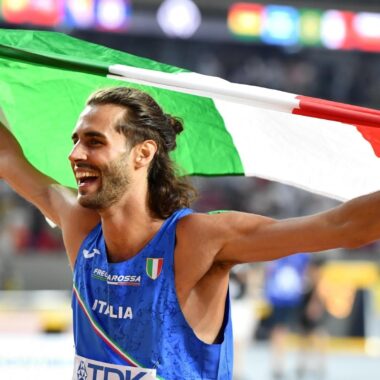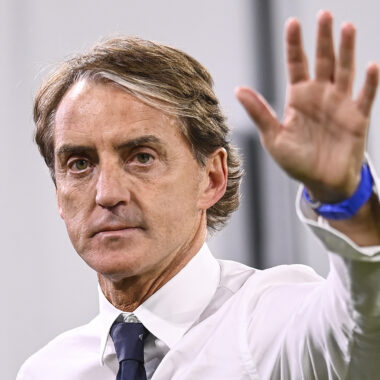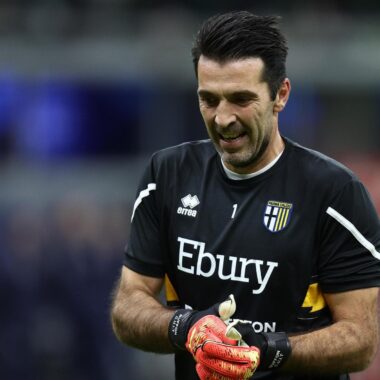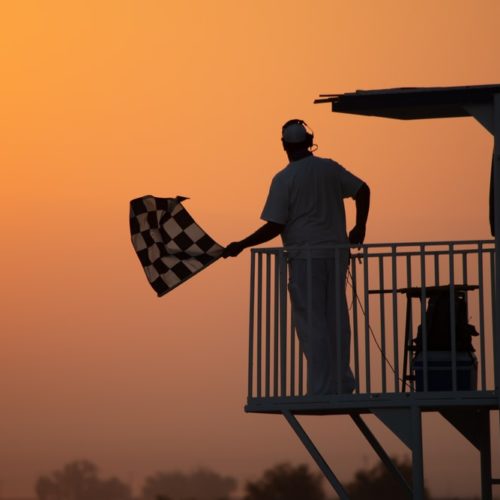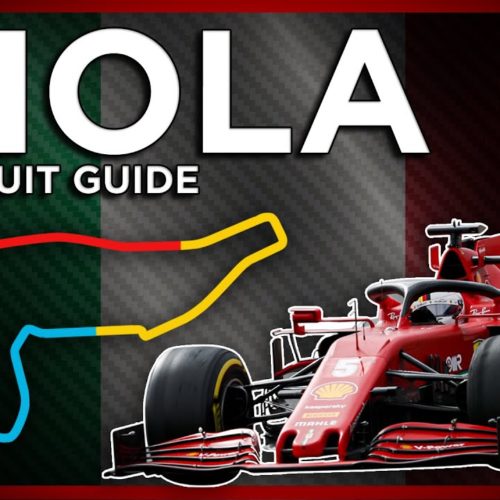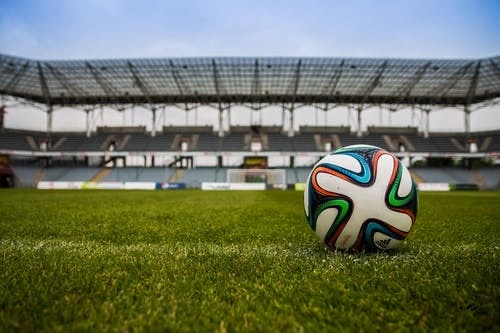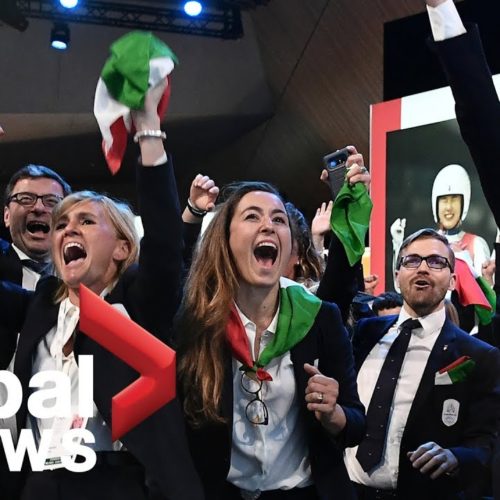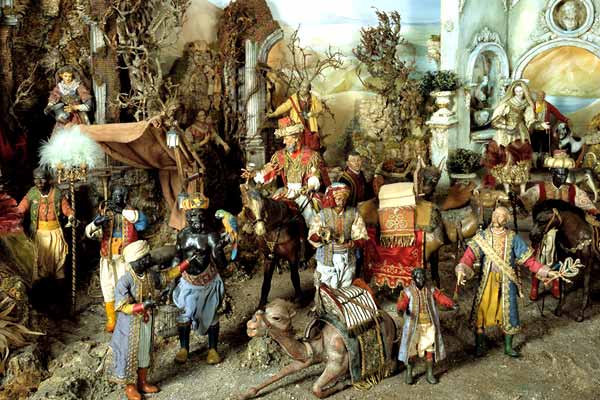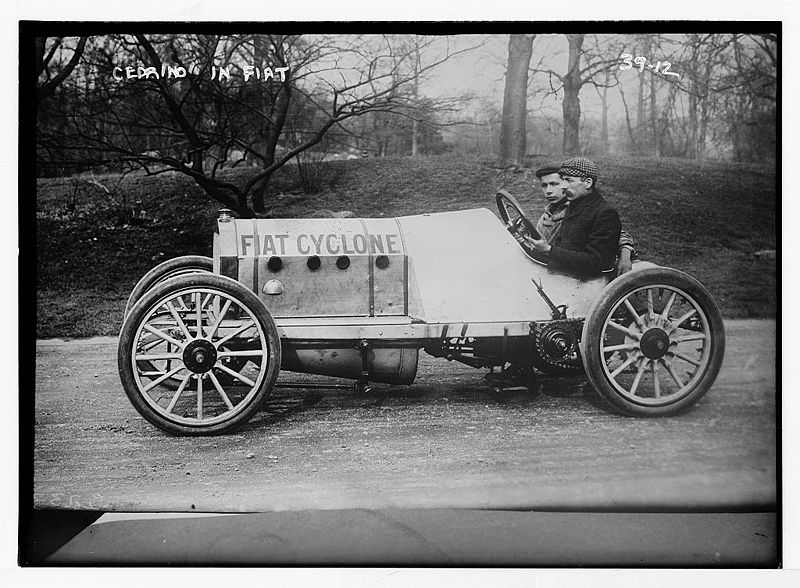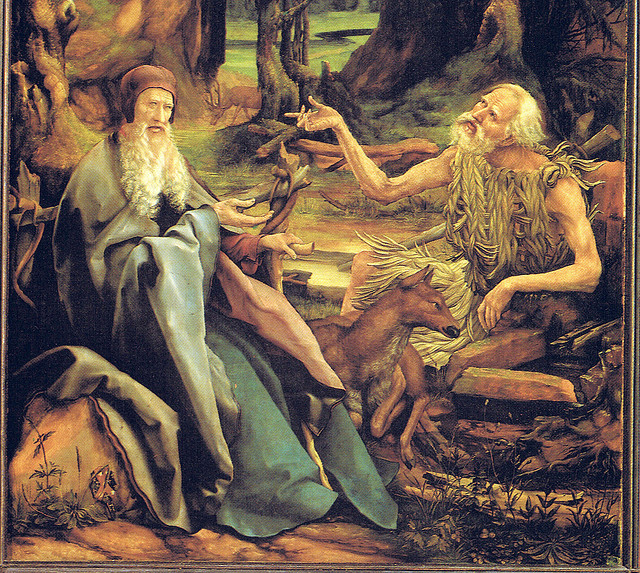Edoardo Bosio was a textile trader born in Turin in 1864. After receiving a diploma in accounting, Bosio went to work for a British company in the textile trade. While living in England the Italian was exposed to the British love of a sport called football (soccer) and, when he returned to Turin in 1887 he brought his memories of green English fields and leather balls with him. At the time the balls were mysteries to Italians, but Bosio believed that the sport of soccer could very well spread throughout his home country. To achieve this objective, Bosio founded a sports association in Turin dedicated to rowing in the summer and soccer in the winter.
In 1889 a second association was formed in Turin, this one called the Team of Nobles, as many founding members were from aristocratic families. The captains were the Duke of Abruzzi and the Marquis Ferrero of Ventimiglia. In 1891, both teams merged into the International Football Club of Turin. The wonder of this team was that nobles would play alongside the workers from a company specialized in the production of optical products. It seems that, even then, soccer was the great equalizer.
Five years later the Reale Societa’ Ginnastica Torino, the first Italian club of gymnastics, formed its own “soccer chapter”: the Football Club Torinese. In 1900, the Football Club Torinese took over the Internazionale Football C1 and the first matches were played in Piazza d’Armi, and later on in the old Stadium Valentino.
At the same time another Italian city began showing strong interest in the English sport: Genoa. The great Mediterranean port city had become a resort town for English merchants and sailors, who immersed themselves in soccer matches, captivating local attention. The Ginnastica Sampierdarenese (and future Sampdoria), founded in 1891, started its soccer section in 1899. On September 7, 1893, following the English Consul General Sir Charles Alfred Payton, the Genoa Cricket and Athletic Club was also founded. Three years later, Englishman James Richardson Spensley initiated the actual soccer team, and on January 2, 1899 he changed the club’s name to Genoa Cricket and Football Club.
As the soccer tournaments and championships started to take form most teams played for the FNGI (Italian Federation of Gymnastics). FNGI organized annual Federal Football Tournaments (official Italian championships) sometimes including those events in the “Concorsi Nazionali FNGI”, a sort of national convention of all sports, like national Olympic Games. The necessity to perform many different sports motivated a summer organization, in order to play on dry fields and avoid the cold winters with heavy rain and snow.
In the FNGI Championships there were some different rules, such as half times of 30 minutes and extra-times of ten; also a bizarre rule stated that the referee in a tie-match would decide the winner, awarding the victory to the more fair-playing team. On November 3, 1900, the FNGI decided to organize the Italian Football Championship during the 13th Federal Council in Vicenza. At the same time they decided to organize the national football games and the national Championships of Tamburello (a sort of Italian “pelota”) as well. Later on, on May 6, 1903, the Games’ Commission adopted the British official football rules and on June 2, 1904, Florence hosted the first Italian Football FNGI Championship, in the same city that centuries earlier had invented the original Florentine football.
In many ways the relationship between an Italian and football, or soccer, is the most important relationship that can be found in Italy. As many say, you can change your religion, spouse, car and home, but never your team. Until 1929 soccer in Italy remained mostly a regional sport, but in that year it started to take the shape of today’s Serie A, with round robin and away games. It is interesting to note how many of the early teams have today virtually disappeared or play in the minor leagues. Some of those teams include Pro Patria, Pro Vercelli and Vado. Other strong original powers like Genoa, Bologna and Torino still play in Serie A and B, but have lost their old power.
World Cup 1934 Final – Italy 2:1 Czechoslovakia
The first true soccer power in Italy was Genoa, who by 1924 had already won nine titles, then slowly became a second level team, although still with a great deal of followers. The major players of this era, such as Meazza and Mazzola also helped Italy win two world titles and one Olympic tournament, but the clubs struggled internationally. It was only much later, when Inter Milan and AC Milan dominated in the 1960s, winning four European Championships and the Intercontinental Cup, that Italy became a true international soccer power.
World Cup Classic Matches: (1938) Italy – Hungary 4-2
After Genoa, Torino became the real phenomenal team. Their magical team of eleven, the best in the world, will never be forgotten. This team won four titles in a row in Italy, but it is their tragic end that is perhaps remembered most. Sadly a plane crash ended the lives of the players prematurely and put an end to one of the strongest teams ever. After Torino’s golden era Juventus (also a team based in Turin), Inter Milan and A.C. Milan truly started to take off. These three remain the preeminent teams in Italy today, leaving slim pickings for the rest like Roma, Lazio, Cagliari and Fiorentina.
Up until the 1970s football in Italy was not only passion, but fun, with families attending games with great atmosphere. Unfortunately the 1970s saw politics enter the arena and beatings and killings occurred for the first time. The decade ended with the tragic murder of a man before the Roma-Lazio “derby,” still one of the most hotly contested matches in Italy.
From a sports’ point of view, as the years went on, the game got faster, but didn’t change much from the 1950s to the 80s. While the 60s was all about Helenio Herrera’s iconic Inter Milan teams, and Nereo Rocco’s A.C. Milan, the 70s were the time of young Giovanni Trapattoni and Juventus. We must also remember the Lazio of Mr. Maestrelli, the undefeated but titleless Perugia of Ilario Castagner and the great Cagliari of Gigi Riva. The 70s ended with AC Milan clinching their 10th title and the retirement of the team’s legendary captain Gianni Rivera. It was also the year Milan earned its first gold star (Italian teams wear gold stars on their jerseys, each marking ten scudettos or championship wins). Inter Milan had reached their tenth scudetto in 1966, while Juventus won their first star in 1958. Even today these three teams are the only ones sporting gold stars, Juventus the only with two.
A major characteristic of Italian football between 1900 and 1980 was the fact that the teams were sports clubs. Soccer wasn’t the big business it is today. Sure, business was made but it was handled in a different way. Media was kept out, except for the radio and a few televised games, and never live. Sponsors weren’t part of the game and many supplies were given on an handshake. Italy allowed foreigners for a bit before eventually banning them in 1960s. It was only in the 80s that all that, and the game, began to change.

